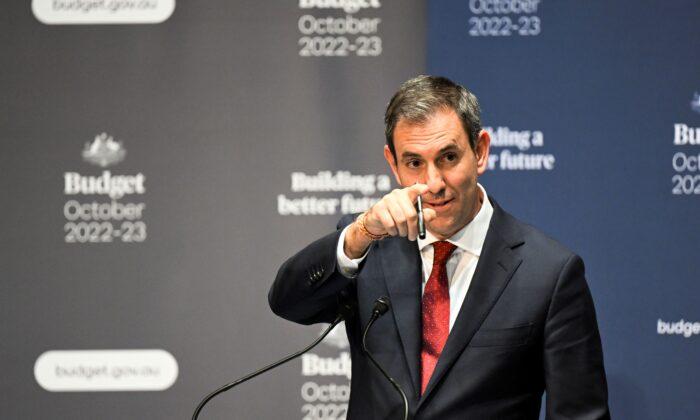The dramatic transformation of Australia’s fiscal landscape by the COVID-19 pandemic has been confirmed by the latest round of state and territory budgets for New South Wales (NSW), Victoria (VIC), Queensland (QLD), South Australia (SA) and the Northern Territory (NT). Their collective shares of GDP cover some 85 percent of the national economy.
Western Australia, Tasmania, and the Australian Capital Territory will keep us in suspense until late August, but we already know broadly where their budgets are heading from previous announcements.
Currently, certain themes have become apparent. Budgets for the financial year ending today have improved from the original estimates thanks to the strong economic rebound, more tax revenue and, to a lesser extent, government spending shortfalls.
Nonetheless, net operating balances remain deeply in deficit.
These deficits are predicted to narrow from here on, and in the cases of NSW, QLD, and SA, to reach smaller surpluses by the end of the projection period, 2024-25. SA gets there first, in 2022-23. However, VIC and the NT are expecting to remain in deficit for the whole period.
Meanwhile, predictions of tiny net operating surpluses four years ahead in NSW and QLD may look reassuring but should be taken with a grain of salt.
Indeed, a cynic would say the numbers have been massaged to produce a result that enables treasurers to say their budgets are heading back to surplus.
In all cases, the improvement in net operating results rests on expenditure being under tight control from now on. However, this will require a major turnaround from the dramatic increase in operating expenses from before the pandemic.
NSW and VIC have led the pack, with increases in the three years to 2021-22 of 26 or 27 percent in expenses, whereas QLD and SA reported more modest gains of 14 to 15 percent.
As pandemic-related expenses subside, though, all states and territories are projecting much lower growth in the three years to 2024-25, with absolute reductions in NSW and NT.
However, experience suggests that restraint on expenditure will not be achieved, and governments will look to revenue growth to balance their operating budgets.
Significant capital expenditure (or “infrastructure”) programs are a feature of the budgets, particularly in NSW, VIC, and QLD.
These are keeping borrowing requirements high despite the planned improvement in net operating results. In other words, state governments are doing what they are often urged to do, which is to borrow at historically low-interest rates so they can spend up big on infrastructure. But the quality of the spending also matters, and it isn’t always apparent that projects are well chosen.
The bottom line is that state or territory debt has already risen dramatically and is set to increase further. There are several ways of measuring this, but if we look at the gross and net debt of the general government sector as a percentage of revenue, this ratio is set to reach 100 to 200 percent on a gross basis, and 60 to 180 percent on a net basis in 2024-25, with VIC and NT the highest, QLD the lowest, and NSW and SA close together in the middle.
For the broader non-financial public sector, the ratios are projected to be 150 to 220 percent on a gross basis and 100 to 200 percent on a net basis. Once again, VIC and NT are the highest, QLD the lowest and NSW and SA are close together in the middle.
If we combine the debt projections of states and territories with those of the federal government, total general government gross debt will be around AU$1.8 trillion (80 percent of GDP) in 2024-25 and non-financial public sector gross debt close to $2 trillion (88 percent of GDP).
This will make government debt the highest it has been relative to GDP since the early post-World War 2 period.
If there were a prize for the most robust financial position of all the states and territories, it would currently go to Western Australia, which has not yet produced a budget for 2021-22, but we already know to be in substantial operating surplus thanks to booming iron ore royalties and the deal it wrangled from the federal government three years ago to put a generous floor under its GST revenue share.
At the other end of the spectrum, VIC and the NT have seen the most considerable deterioration in recent years, but for different reasons.
In the case of Victoria, both recurrent and capital spending has been ramped up dramatically, and taxes are being increased. However, there is still no prospect of returning to the operating surpluses that could once be relied upon in that state.





